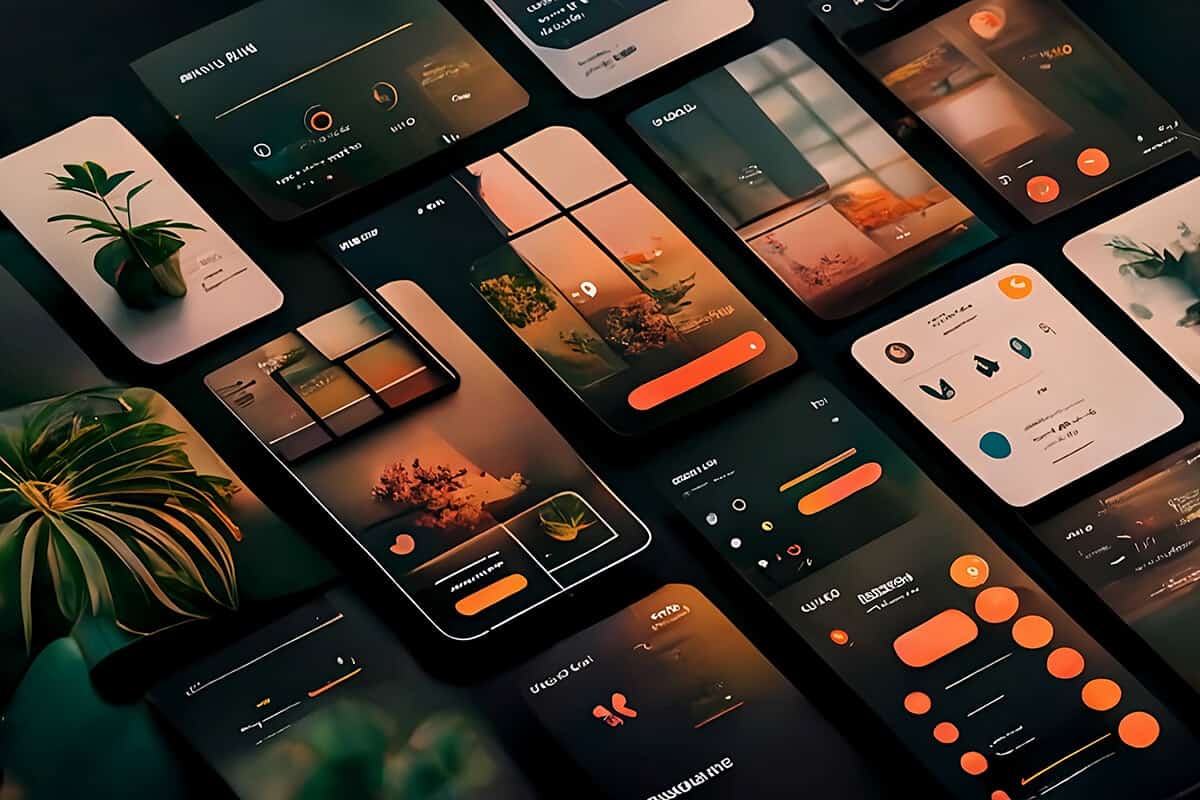Are you looking to enhance your website’s user experience? Look no further! In this article, we will share 10 essential web design tips that will not only captivate your users but also improve their overall experience on your site. From implementing intuitive navigation menus to optimizing page loading speeds, these tips will help you create a user-friendly website that keeps visitors coming back for more. Get ready to boost engagement, increase conversions, and leave a lasting impression on your audience.
Whether you’re a seasoned web designer or a newbie, these tips will provide you with valuable insights and practical strategies to create a visually appealing and user-centric website. We’ll discuss the importance of responsive design, the role of whitespace in enhancing readability, and the power of strong visual elements in capturing attention. Additionally, we’ll delve into the significance of mobile optimization, avoiding cluttered layouts, and optimizing call-to-action buttons for maximum conversion potential.
Don’t miss out on this opportunity to take your web design skills to the next level. Let’s dive in and discover how to create a seamless and delightful user experience on your website!
The importance of web design for user experience

When it comes to attracting and retaining website visitors, web design plays a crucial role. A well-designed website not only looks visually appealing but also creates a seamless and delightful user experience. Users are more likely to engage with a website that is easy to navigate, visually pleasing, and provides relevant information.
To create an effective web design, it’s important to understand your target audience and their expectations. Conduct user research to gain insights into their preferences, behaviors, and needs. This will help you tailor your design to meet their specific requirements, ensuring a positive user experience.
Additionally, a good web design can significantly impact your website’s search engine rankings. Search engines like Google prioritize user experience, and a well-designed website is more likely to rank higher in search results. So, investing in web design not only benefits your users but also boosts your website’s visibility.
Understanding user behavior and expectations

To create a user-friendly website, it’s crucial to understand how users interact with websites and what they expect from their browsing experience. Users typically scan websites rather than reading every word, so it’s important to structure your content in a way that allows for easy scanning.
One way to accommodate scanning behavior is by using clear headings and subheadings to break up your content. This helps users quickly find the information they’re looking for and encourages them to stay on your website longer.
In addition to scanning behavior, users also have certain expectations when it comes to website navigation. They expect to find a clear and intuitive menu that allows them to easily navigate through different sections of your website. Make sure your navigation menu is prominently displayed and includes relevant categories and subcategories.
Responsive design and mobile optimization

In today’s mobile-driven world, having a responsive website is no longer an option – it’s a necessity. Responsive design ensures that your website adapts seamlessly to different screen sizes and devices, providing a consistent user experience across all platforms.
With more and more users accessing websites on their smartphones and tablets, it’s crucial to optimize your website for mobile devices. This includes designing mobile-friendly layouts, using larger fonts and buttons for easy navigation, and ensuring fast loading times on mobile networks.
By embracing responsive design and mobile optimization, you can reach a wider audience and ensure that all users have a positive experience on your website, regardless of the device they’re using.
Clear and intuitive navigation
Navigation is a critical aspect of web design as it dictates how easily users can find the information they’re looking for. A well-designed navigation menu should be clear, intuitive, and easy to use.
To create an effective navigation menu, start by organizing your content into logical categories. This will help users navigate your website more easily and find the information they need without feeling overwhelmed.
Additionally, consider using visual cues such as drop-down menus or breadcrumb navigation to provide users with a clear path to explore your website. Visual cues make it easier for users to understand the structure of your website and find their way around.
Remember, simplicity is key when it comes to navigation. Avoid cluttering your menu with too many options, as this can confuse users and make it harder for them to find what they’re looking for.
Consistent branding and visual elements

Consistency is crucial when it comes to branding and visual elements in web design. Your website should reflect your brand identity and create a cohesive experience for users.
Start by defining your brand’s visual elements, such as your logo, color palette, and typography. These elements should be consistently applied throughout your website to create a unified and professional look.
Consistent branding not only enhances your website’s aesthetics but also helps users recognize and remember your brand. This can lead to increased brand loyalty and trust, ultimately driving more conversions and sales.
Optimized page loading speed

Page loading speed is a critical factor that can make or break the user experience. Users expect websites to load quickly, and if your website takes too long to load, they are likely to abandon it and look for alternatives.
To optimize your page loading speed, start by optimizing your images and videos. Compress large media files without compromising their quality to reduce file sizes. Additionally, enable browser caching and minimize the use of external scripts and plugins to reduce server requests.
Regularly test your website’s loading speed using tools like Google PageSpeed Insights or GTmetrix. These tools provide insights and recommendations to help you identify areas for improvement and optimize your website’s performance.
Use of white space and readability
White space, also known as negative space, is the empty space between elements on a webpage. It plays a crucial role in enhancing readability and creating a visually pleasing design.
By incorporating ample white space, you can improve the legibility of your content and make it easier for users to read and understand. Avoid cluttered layouts and give your content room to breathe.
In addition to improving readability, white space also helps draw users’ attention to key elements on your website. Use white space strategically to highlight important information, such as call-to-action buttons or key messages.
Effective use of colors and typography
Colors and typography have a significant impact on the overall look and feel of your website. They can evoke emotions, convey messages, and create a memorable brand identity.
When choosing colors for your website, consider your brand’s personality and target audience. Colors should be consistent with your brand identity and evoke the desired emotions in users. For example, bold and vibrant colors can create a sense of energy and excitement, while muted and pastel colors can create a more calming and relaxing atmosphere.
Typography is equally important when it comes to web design. Choose fonts that are legible and easy to read across different devices and screen sizes. Consider using a combination of fonts to create contrast and hierarchy in your content.
Incorporating multimedia elements

Multimedia elements such as images, videos, and infographics can greatly enhance the user experience on your website. They can help break up text-heavy content, make it more engaging, and convey information more effectively.
When using images, make sure they are high-quality, relevant, and properly optimized for web. Large, high-resolution images can significantly slow down your website’s loading speed, so it’s important to strike a balance between image quality and file size.
Videos are another powerful tool for engaging users. They can be used to showcase products or services, provide tutorials, or share customer testimonials. Make sure your videos are embedded properly and can be easily viewed on different devices.
Infographics are a great way to present complex information in a visually appealing and easy-to-understand format. They can help users grasp concepts quickly and increase the shareability of your content.
Testing and optimizing your web design for better user experience
Once you’ve implemented your web design, it’s important to continuously test and optimize it for better user experience. A/B testing, heatmaps, and user feedback are valuable tools that can help you identify areas for improvement and make data-driven design decisions.
A/B testing involves creating two versions of a webpage and comparing their performance to determine which design elements are more effective. This can help you optimize your design for better conversions, engagement, and overall user experience.
Heatmaps provide insights into user behavior by visualizing where users click, scroll, or spend the most time on your website. This data can help you identify areas of interest, as well as potential usability issues that need to be addressed.
User feedback is another valuable source of information for optimizing your web design. Encourage users to provide feedback through surveys, feedback forms, or social media. This feedback can help you understand their pain points, preferences, and expectations, allowing you to make informed design decisions.
In conclusion, web design plays a crucial role in creating a seamless and delightful user experience. By implementing these 10 essential web design tips, you can enhance your website’s user experience, boost engagement, increase conversions, and leave a lasting impression on your audience. Remember to understand your users, embrace responsive design, optimize navigation, maintain consistent branding, prioritize page loading speed, utilize white space effectively, choose colors and typography wisely, incorporate multimedia elements, and continuously test and optimize your design. With these tips in your arsenal, you’ll be well on your way to creating a user-friendly website that keeps visitors coming back for more.



